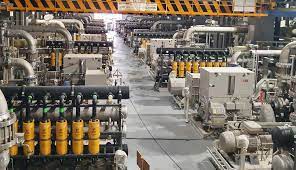
Breaking News
 FULL SPEECH: Tucker on the America First Movement & New "Deplatforming" Agenda
FULL SPEECH: Tucker on the America First Movement & New "Deplatforming" Agenda
 Red Light Therapy And Men's Health: Does It Really Work?
Red Light Therapy And Men's Health: Does It Really Work?
 Kash Patel's New FBI Clown Show - The Bizarre Interview He Will Regret For The Rest of His Life
Kash Patel's New FBI Clown Show - The Bizarre Interview He Will Regret For The Rest of His Life
 One Rifle I Trust for Everything
One Rifle I Trust for Everything
Top Tech News
 This tiny dev board is packed with features for ambitious makers
This tiny dev board is packed with features for ambitious makers
 Scientists Discover Gel to Regrow Tooth Enamel
Scientists Discover Gel to Regrow Tooth Enamel
 Vitamin C and Dandelion Root Killing Cancer Cells -- as Former CDC Director Calls for COVID-19...
Vitamin C and Dandelion Root Killing Cancer Cells -- as Former CDC Director Calls for COVID-19...
 Galactic Brain: US firm plans space-based data centers, power grid to challenge China
Galactic Brain: US firm plans space-based data centers, power grid to challenge China
 A microbial cleanup for glyphosate just earned a patent. Here's why that matters
A microbial cleanup for glyphosate just earned a patent. Here's why that matters
 Japan Breaks Internet Speed Record with 5 Million Times Faster Data Transfer
Japan Breaks Internet Speed Record with 5 Million Times Faster Data Transfer
 Advanced Propulsion Resources Part 1 of 2
Advanced Propulsion Resources Part 1 of 2
 PulsarFusion a forward-thinking UK aerospace company, is pushing the boundaries of space travel...
PulsarFusion a forward-thinking UK aerospace company, is pushing the boundaries of space travel...
 Dinky little laser box throws big-screen entertainment from inches away
Dinky little laser box throws big-screen entertainment from inches away
 'World's first' sodium-ion flashlight shines bright even at -40 ºF
'World's first' sodium-ion flashlight shines bright even at -40 ºF
Report: LG Energy Solution Developing LFP Batteries

LG Chem's LG Energy Solution is expected to expand its EV battery offer with the LFP (lithium iron phosphate) lithium-ion chemistry (the oldest one), which is gaining popularity again.
So far, LG Energy Solution was focused on the NCM (nickel, cobalt, manganese) cathode chemistry and new NCMA (nickel, cobalt, manganese and aluminum) to achieve the best energy density and reduce the cobalt content to keep costs under control.
According to The Elec, the company has realized that the LFP chemistry also has business potential despite its lower energy density, because it's cobalt- and nickel-free, less expensive and considered safe. Recently, Tesla introduced the LFP battery option in the U.S.
We can only guess that developments were triggered by the customer inquiries as well as observations on how well the CATL and BYD are progressing - the energy density of the cells improved to a decent level, affordability is very important in the mass market, and the cell-to-pack design makes LFP a very competitive option.



